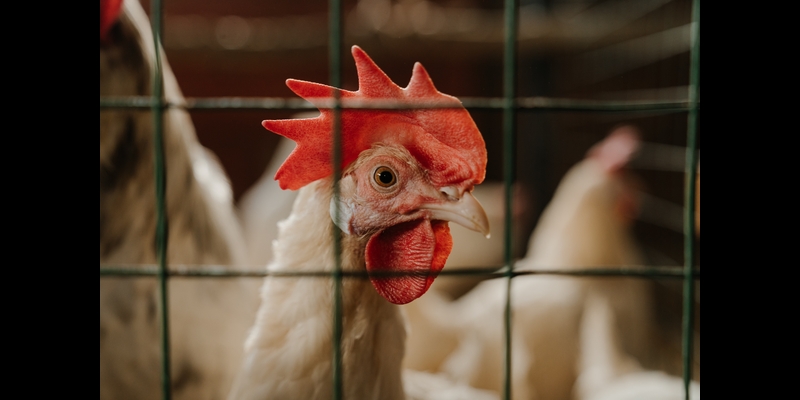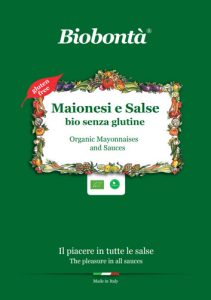Part two: the real hens’ welfare
Last time we talked about two kinds of hens’ intensive rearing:
• Battery hens intensive rearing
• free-range hens intensive rearing
This time we’ll talk about two other rearing methods:
• outdoor-raised hens
• organic outdoor-raised hens
Apparently, these two typologies seem to be pretty the same.
Actually, they are not.
I would like to take up for simplicity and clarity the scheme of Directive 2002/4/EC which in turn applies the provisions of Directive 1999/74/EC that lays down minimum standards for the protection of laying hens.
This is the table on the identification code of the egg type and therefore of the breeding methodology related to it:
| BATTERY | FREE-RANGE | OUTDOOR-RAISED | ORGANIC |
| CODE | 3 | 2 | 1 | 0 |
| DENSITY | 13 hens per m² | 9 hens per m² | 9 hens per m² | 6 hens per m² |
| OUTDOOR SPACE | NO | NO | 4 hens per m² | 4 hens per m² |
| ANIMALS | No limitations | No limitations | No limitations | 3.000 per shed |
Apparently, there seems to be little difference between the method of outdoor and organic outdoor breeding.
However, let us take a closer look at the two methods of rearing.
- Conventional outdoor breeding
As for free-range intensive rearing, you cannot exceed 9 hens per square meter. The space outside the shed must be able to accommodate at least 4 hens per square meter.
On the contrary, there is no limit in terms of animals’ quantity.
If I have a 656 feet long and 49 feet wide shed – about 3.000 square meters – I can raise 27,000 hens.
This a very large number: once again we are faced with an absolutely intensive method of breeding!
With little difference from the free-range intensive rearing.
At the same time, I should have a space outside and next to the shed of 6,750 square meters.
In fact, while it remains an intensive method of rearing, at least in this case animals can go outdoor, to a limited extent, in the open air and enjoy the sunlight!
What would be an absolutely normal condition for any living being, becomes, in this case, a kind of privilege!
The feed that is given to these animals, however, remains an open game.
As in the case of battery and free-range intensive rearing, these are high-protein feed.
This is made by processing the most cost-effective mix on the computer, on the basis of the evolution of commodity costs on national and international markets.
Commodities are mainly soybeans, followed by sunflower and various cereals.
The massive use of soya, especially in animal husbandry in general, is paradoxically at the base of the deforestation of the Amazon!
Brazil is in fact one of the largest producers and exporters: 86.8 million tonnes, out of a world production of 360.9 million tonnes, immediately after the USA.
It is a curious, yet dramatically real aspect of the famous “butterfly effect”.
Intensive rearing of hens in Italy directly causes the deforestation of Amazon forests in Brazil.
Those are knocked down to make room for the cultivation of the much more profitable soy!
But let’s come back to our outdoor-raised chickens.
In practice, optimal table values of proteins, fats, mineral salts, vitamins, etc. are established to ensure that the animal has a diet that brings its egg production “performance” to the highest levels permitted by the species.
Once again, we are talking about bionic machines!
- Organic outdoor breeding
In this case, the number of animals allowed per square meter drops from 9 to 6 hens.
The outdoor space remains at least 1 square meter for 4 animals.
But the most significant difference is the number of hens allowed per warehouse shed: 3,000 hens at most.
Here comes the concept of animal welfare.
By doing the necessary proportions and adopting an anthropocentric point of view, allowing the storage of 3,000 or even 5,000 hens per shed, both battery, free-range, and outdoor intensive rearings are like for humans living in a large metropolis.
With all the drawbacks that come with it: excessive overcrowding, air pollution, noise pollution, existential stress, neurotic behavior, etc.
On the contrary, allowing a maximum of 3,000 hens per shed, organic breeding represents the human equivalent of living in a small town.
Here there are no the same downsides as in the metropolis, and people can even have a relationship or personally know other inhabitants.
Animals do know and recognize their fellows, but clearly only if their number is limited, exactly as it is for humans.

Anyway, compared to the other 3 methods of intensive rearing, organic breeding presents other important distinguishing features.
Annex III to the Organic Law, Regulation (EC) No 889/2008, pursuant to Regulation (EC) No 834/2007, lays down additional requirements for the welfare of laying hens:
a) Each animal must have a 18 cm perch to lay on;
b) there must be a nest every 7 laying hens, in the case of a common nest there must be 120 cm2/bird;
c) As in intensive rearing, for every 4 hens, there must be 1 square meter of outdoors area available in rotation.
It is in this very last point c) that emerges the total difference between organic breeding and the other methods of rearing.
Annex IV states that in organic breeding the maximum number of laying hens per hectare is 230!
Hence, if I have a shed with 3,000 hens, I need at least 13 hectares of plot.
This is not only directly related to animal welfare but, to a greater extent, to organic farming and its attention toward the protection of the territory.
It all starts with the average absorption of the soil, which is 170 kg N (nitrogen)/ha/year, to then define, according to such number and the defecation of the animal species, in this case, hens, the maximum number of animals allowed per land.
In accordance with this number, the soil will surely absorb all the dejections of the animal in question, without causing the pollution of the groundwater, water courses next to the breeding, etc.
If you compare this organic method of breeding with the intensive method of rearing, you will realize and recognize the massive pollution and the environmental devastation that they cause!
In this regard, I quote point 8 of the premises of Regulation (EC) No 834/2007 on organic production:
“The holistic approach of organic farming requires a livestock production related to the land, where the produced manure is used to nourish the crop production.
Since livestock farming always implies the management of agricultural land, provision should be made to prohibit landless livestock production.
In organic livestock production the choice of breeds should take account of their capacity to adapt to local conditions, their vitality and their resistance to disease and a wide biological diversity should be encouraged.”
At point 12:
“In order to avoid environmental pollution of natural resources such as soil and water by nutrients, an upper limit for the use of manure per hectare and for keeping livestock per hectare should be set. This limit should be related to the nitrogen content of the manure.”
That is exactly what emerges from Annex IV, as we mentioned before.
But let’s come back to the thing I care about the most: animal welfare.
The premises of Regulation on organic production claims at point 10:
“Organic stock farming should ensure that specific behavioural needs of animals are met.
In this regard, housing for all species of livestock should satisfy the needs of the animals concerned as regards ventilation, light, space and comfort and sufficient area should accordingly be provided to permit ample freedom of movement for each animal and to develop the animal’s natural social behaviour.
Specific housing conditions and husbandry practices with regard to certain animals, including bees, should be laid down. These specific housing conditions should serve a high level of animal welfare, which is a priority in organic livestock farming and therefore may go beyond Community welfare standards which apply to farming in general.
Organic husbandry practices should prevent poultry from being reared too quickly.
Therefore specific provisions to avoid intensive rearing methods should be laid down.”
And then at point 13:
“Mutilations which lead to stress, harm, disease or the suffering of animals should be banned. However, specific operations essential to certain types of production and for the sake of security for animals and human beings may be permitted under restricted conditions.”
Point 14:
“Livestock should be fed on grass, fodder and feeding stuffs produced in accordance with the rules of organic farming, preferably coming from the own holding, by taking into account their physiological needs. In addition, in order to provide for the basic nutritional requirements of livestock, certain minerals, trace elements and vitamins may need to be used under well-defined conditions.”
Point 16:
“Animal-health management should mainly be based on prevention of disease. In addition specific cleaning and disinfection measures should be applied.”
Point 17:
“The preventive use of chemically-synthesised allopathic medicinal products [meaning antibiotics] is not permitted in organic farming. However, in the event of a sickness or injury of an animal requiring an immediate treatment, the use of chemically synthesised allopathic medicinal products should be limited to a strict minimum. Furthermore, in order to guarantee the integrity of organic production for consumers it should be possible to take restrictive measures such as doubling the withdrawal period after use of chemically synthesised allopathic medicinal products.”
If you compare these statements, aimed at safeguarding true animal welfare, with the harsh reality of intensive rearing, you will understand that it is like making a comparison between holy water and the devil!
The Europen Union has recently and finally took into account animal welfare, and it has also drafted a Special Report No 31/2018 titled:
“ Animal welfare in the EU: closing the gap between ambitious goals and practical implementation”.
You can download it both in Html and PDF formats in one of the 23 available languages.
I also enclose an infographic contained in the report, which well highlights how the path towards general animal welfare is stuck in 1988, which is more than 20 years ago!
“We make recommendations to the Commission aimed at improving their management of the animal welfare policy. Our recommendations cover the strategic framework for animal welfare, more effective enforcement and guidance to achieve compliance, actions to strengthen the links between the cross-compliance system and animal welfare and action to better address animal welfare objectives through the rural development policy.”
We citizens of the European Union should all make sure that these statements of principle become a reality!

